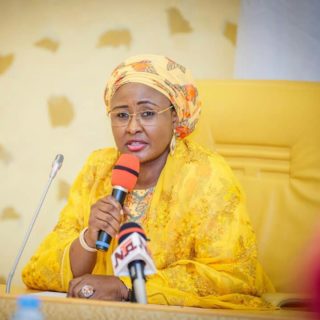Nigeria is suffering its worst flooding crisis since 2012. For months, these floods have forced thousands of people out of their homes.
What caused the flooding crisis?
Heavy rainfalls and the release of excess water from Cameroon’s Lagdo Dam and other dams in Nigeria are largely responsible for the floods. The Nigerian government’s failure to build infrastructure to control floods allowed them to easily submerge hundreds of communities.
What’s the damage of the floods?
According to the Federal Government, the floods have affected 31 states and resulted in:
- 500 people dead
- 790,254 people displaced
- 1.4 million people directly affected
- 1,546 people injured
- 44,099 houses partially damaged
- 45,249 houses totally damaged
- 76,168 hectares of farmland partially damaged
- 70,566 hectares of farmland are completely destroyed
How’s the government responding?
Even though many Nigerians are calling the flooding disaster a national crisis, the government doesn’t have a centrally-coordinated response. The structure of disaster response currently starts at the local government and state government levels.
As first responders, these levels of government are responsible for providing relief for victims of floods. This means responding to floods can be different from state to state.
Many state governments have provided temporary shelters for flood victims displaced from their homes. But the Kogi State governor, Yahaya Bello, has complained about inadequate palliatives for the victims and called on the Federal Government to step in.
Since the flooding crisis worsened over the past two months, the National Emergency Management Agency (NEMA) and Ministry of Humanitarian Affairs, Disaster Management and Social Development have coordinated the Federal Government’s response.
The ministry announced the approval of the National Emergency Flood Preparedness and Response Plan on October 11th, 2022. The plan contains immediate, short term and long-term measures to control the impact of flooding in Nigeria. However, the details of this plan are currently unknown.
NEMA claims to have distributed relief materials to over 315,000 displaced people nationwide. The agency has also collaborated with the Disaster Response Unit (DRU) of the Nigerian military to conduct search and rescue operations for trapped victims.
Despite this, the government needs to be doing better as NEMA expects more heavy rainfalls in the coming weeks.
What are citizens doing?
Non-profit organisations and individuals are raising funds to support victims. Nigerians who want to help can reach out to them to donate money and materials for the victims.
What should the government be doing?
The government’s disorganised response to the ongoing flooding crisis makes it difficult for victims to get all the help they need at such a delicate time.
Flooding is one of the most frequent natural disasters in Nigeria and we’ve had enough years to learn valuable lessons to coordinate a better response.


 In Akenfa, The east west road will soon be blocked as well. Please help
In Akenfa, The east west road will soon be blocked as well. Please help


